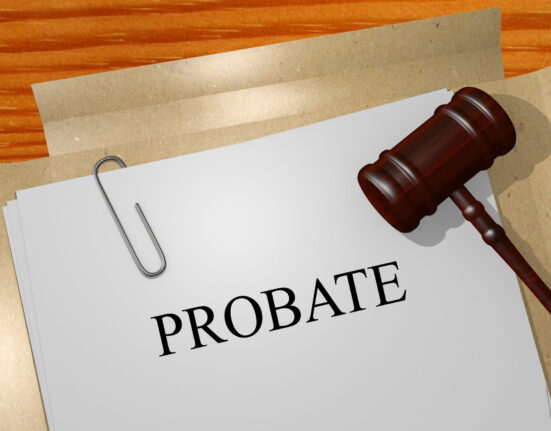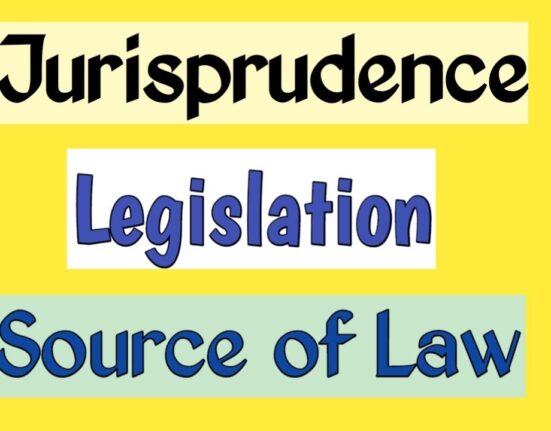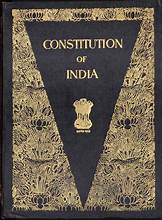Saumya Garg, a 3rd-Year BBA LL.B student of UPES, Dehradun has written this article explaining “Indian Limitation Act, 1963 with Its salient features”.
INDIAN LAW OF LIMITATIONS: INTRODUCTION
Limitations already convey their meaning. When used literally, the word “limitation” refers to constraints, a law, or restricted conditions. The law of limitations has been established as the window of opportunity during which a party who has suffered harm may seek remedies from the court. Although it is not required of every citizen to be well-versed in the many provisions which have been made for restriction in different litigation concerns, it is vital to have some fundamental understanding of the law of limitations[1].
Limitation Act, 1963 is an Indian statute that specifies the deadline for submitting a lawsuit to a court of law. Such legislation must be in place to guarantee that conflicts are settled in a fair amount of time and that the person who was wronged receives justice. The law was passed to standardize India’s statute of limitations and to set a clear deadline for filing lawsuits. We shall examine the Indian Limitation Act, of 1963 in further detail in this post, as well as some of its key components[2].
The fundamental idea of restriction has to do with setting a time limit for the suspension of legal activities. The term “period of limitation” or “prescribed period” refers to the period estimated for compliance with the requirements of this Act. It is defined in Section 2(j) of the Limitation Act of 1963, for any action, appeal, or application. The Law of Limitations states that certain legal actions against a party who has been wronged are prohibited after a certain period. It also instructs parties to file a lawsuit, seek a remedy from the court, and assert their legal rights. When a lawsuit is filed after the statute of limitations has expired, the law of limitations will apply[3].
HISTORICAL BACKGROUND
The Limitation Act, of 1859, and later the Limitation Act, of 1963, were enacted on October 5, 1963, and they went into effect on January 1, 1964, intending to bring together and amend the legal principles associated with the limitation of suits and other legal processes[4].
Following the requirements of the Act, even if the limitation cannot be used as a defense, requests that are filed after the designated period will be rejected, regardless of whether an appeal is heard. It’s a lawsuit that is started when a complaint is made to any suitable official in a typical situation and when the individual is a pauper. In other instances, a lawsuit is started when the official liquidator receives a request for permission to file a lawsuit on behalf of a pauper. The case involves allegations made against a corporation that is being wound up by a court.
If the claim is presented as a setoff or counterclaim, it will be treated as a different lawsuit. Moreover, in case of setoff, it will be treated as having begun on the day the prior setoff is pled. It might be claimed that when there is an additional claim, a lawsuit must be filed on the same day as the counterclaim. Once the application is sent to the proper officer of that specific Court, a request is filed in the High Court by notice of motion[5].
Some Important Points
According to the Act, any lawsuits brought for a claim of preemption or the extension of the statute of limitations for such a time and under such conditions shall not be subject to legal incapacity. The date from which the applicable limitation period is to be calculated for any lawsuit, appeal, or application must be deemed to be excluded. The time for calculating the filing date for a lawsuit filed for review, revision, or appeal of a judgment shall begin on the day the judgment is given. The request for a duplicate copy of the decree or order being appealed from, revised, or reviewed will be excluded.
The Act also specifies other computations of the statute of limitations for actions against trustees, the execution of judgments, and the consequences of fraud or error. According to the Act, an easement can be acquired by prescription for a 20-year uninterrupted use of the land.
The provisions made by The Indian Contract Act of 1872 are unaffected by The Limitation Act of 1963. The Act is put into force because it denies the court the ability to hear cases considered to be frivolous and prevents the complainants from having to wait a long time for their outstanding cases to be resolved[6].
THE LIMITATION ACT OF 1963: A BRIEF HISTORICAL OVERVIEW
There was just the law of prescription in the agrarian economy of Ancient and Mediaeval India. At that time there were no concept guiding limits. The British Law of Limitation started to be observed after the foundation of the Madras, Bombay, and Calcutta presidencies. Along with it, the establishment of the mofussil courts. Act XIV, 1859, whose provisions applied to all Courts, was passed in 1859. It marks the first attempt to bring consistency to the law of limitations. After that, the Limitation Act was repealed in 1871, 1877, and 1908. The Third Law Commission abolished the Limitation Act of 1908, and the Limitation Act of 1963 went into effect[7].
THE LIMITATION ACT OF 1963’S PURPOSES AND COMPONENTS
The Limitation Act, 1963’s purpose the first is the assumption that a right that hasn’t been used for a long time is nonexistent. It forms the basis of the theory of restriction. Second, it’s critical that property rights and rights generally not be subject to ongoing ambiguity. The maxim “interest reipublicae ut sit finis litium” states that it is in the State’s best interest for a lawsuit to be settled[8].
The Limitation Act only specifies the time frame within which existing rights may be enforced. It neither creates nor defines any cause of action. It incorporates a well-known legal doctrine that holds that “vigilantibus non-dormientibus jura subvenieut”—the law aids only those who are alert, not those who are asleep over their rights. The purpose of the Limitation Act is to silence long-standing claims and put a stop to stale requests since unrestricted and everlasting litigation upsets society’s calm[9].
To prevent harassment of the opposing party by presenting outdated claims before the court. This statute’s main goal is to make litigants attentive in seeking their remedy. Except in cases where the law of prescription extinguishes both the remedy and the right. It primarily prohibits a litigant’s remedy but does not bar a right. One may argue that the law of limitation serves as both a prescription and a law of limitation[10].
INTERPRETATION
- The limitation rule is a procedural or adjectival rule of law. Adjective law serves to expedite justice and advance its goals.
- A statute of limitations prevents a harmed party from pursuing legal action. Because the rules of procedure are meant to be a handmaiden to the administration of justice. It must be interpreted in a way that makes the implementation of substantive rights effective.
- Equitable factors, however, are extraneous and immaterial in reading and implementing the law of limitation.
- Therefore, if its wording is obscure, confusing, or ambiguous, that view should be favored which maintains this remedy as opposed to one which blocks or defeats it[11].
THE SCHEME OF LIMITATIONS ACT OF 1963
Based on the Law Commission’s opinions and recommendations, the current Limitation Act of 1963 was adopted. The Law Commission contends that the law of limitation has to be clear, logical, and straightforward. The restriction period shouldn’t be either too long or too short. It should be in line with laypeople’s viewpoints and presumptions. For example, the statute of limitations for recovering moveable property ought to be 12 years. However, in other situations, it should be 3 years, etc.
The sections within the Act’s main body regulate and control the schedule’s articles. The act’s provisions should be interpreted harmoniously as a whole, but in the event of a conflict or discrepancy, the former will take precedence over the latter[12].
LIMITATION ACT’S ESSENTIALS
- It has 137 articles and 32 sections.
- The Limitation Act specifies a minimum statute of limitations of 10 days.
- The Limitation Act’s 30-year maximum statute of limitations.
- It specifies the window of time within which a party who has been wronged must file a lawsuit, an appeal, or an application to seek justice or retribution.
- It is founded on the premises:
- “Interest Reipublicae Ut Sit Finis Litium” (It is in the State’s interest that a lawsuit be resolved) and
- “Vigilantibus non dormientibus jura subveniunt” (Vigilantibus non dormientibus jura subveniunt): The law supports those who exercise caution rather than those who neglect their rights[13].
SALIENT FEATURES OF THE INDIAN LIMITATION ACT, 1963
The Limitation Act has 137 Articles and 32 Sections. There are ten sections to the articles. Which deals with accounts, contracts, declarations, decrees and instruments, immovable property and movable property, torts, trusts, and trust property, etc. The cases for which the classifications have been tried do not all have the same limitations.
If the mortgagor files a lawsuit for the redemption of the immovable property that was mortgaged. Furthermore, if a mortgagee files a lawsuit for foreclosure on behalf of the Central Government or any State Government. It includes the State of Jammu and Kashmir, and the limitation period is lowered from 60 years to 30 years.
What is meant by “Limitation period”?
According to the Act, the limitation period is the maximum amount of time that must pass before filing a lawsuit in a court of law. The time frame varies based on the Act’s requirements and the claim’s specifics.
Calculating the statute of limitations:
The Act outlines how the limitation period will be calculated. The time frame starts when the basis for action arose or when the right to suit was obtained. The Act also stipulates that certain periods, such as those during which the plaintiff was disabled, the time required to obtain a certified copy of the decree or order, as well as the time required to obtain a sanction for bringing a lawsuit against a public official, are excluded from the limitation period.
Various categories of claims have various time limits:
The Act establishes various time limits for various sorts of claims. For instance, the statute of limitations for a lawsuit to collect money is three years from the day the debt became due. However, the deadline for a lawsuit to obtain possession of the property in question is 12 years. Which starts from the date of the adverse possession.
Extending the statute of limitations:
The Act allows for an extension of the statute of limitations under specific conditions. The court might extend the limitation period. For instance, if the plaintiff was prohibited by good cause from bringing the lawsuit within the allotted limitation time.
A restriction on the court’s authority:
The Act restricts the court’s ability to consider a lawsuit that has run its course. The plaintiff must demonstrate that he was prohibited from filing the lawsuit within the allowed limitation period by sufficient reason before the court may consider such a claim.
The results of admitting fault:
According to the Act, the limitation period will start over if the defendant admits culpability. A written recognition of this fact, however, must be signed by the defendant or his designated representative.
Limit on further applications:
According to the Act, if an earlier application was denied due to a time constraint. The applicant cannot make a subsequent application for the same remedy.
Criminal case restrictions:
The Act establishes a deadline for submitting complaints in criminal proceedings. The length of time depends on the type of offense.
For Moveable and Immovable Property
Unlike different types of lawsuits relating to immovable property, trusts, and endowments, which have a longer period of 12 years prescribed, lawsuits relating to accounts, contracts, and declarations, lawsuits relating to decrees and instruments, as well as lawsuits relating to movable property, have a shorter period of 3 years prescribed.
For Torts and Appeal
For lawsuits involving torts, other unrelated matters, and lawsuits for which no statute of limitations has been set down anywhere within the Schedule to the Act, a time ranging from one to three years has been specified. The appeal against a death sentence imposed by the High Court or the Court of Session during the process of exercising their original jurisdiction, which has been extended to 30 days from the date of the sentence imposed, is to be considered to have a minimum time of seven days under the Act.
One of the most notable aspects of the Limitation Act of 1963 is that it must avoid illustrations. It is provided in the Third Report of the Law Commission on the Limitation Act of 1908. As they are frequently superfluous and deceptive.
Scope of The Limitation Act, of 1963
The Limitation Act, of 1963 has an extremely broad scope that practically covers all court actions. Whatever petition, original or not, is now included in the term “application.” The Limitation Act of 1963’s Sections 2 and 5 have changed in language to cover all petitions and applications made under special legislation.
The definitions of “application,” “plaintiff,” and “defendant” under the new Act have been expanded to cover more parties. An individual whose estate has been represented by the executor, administrator, or other representatives may also be referred to as the plaintiff or defendant, depending on the circumstances.
Before using foreign rulers, ambassadors, or envoys, the Central Government must agree, under Sections 86 and 89 of the CPC. According to the Limitation Act of 1963, when estimating the statute of limitations for bringing such lawsuits, the time spent seeking such permission shall be disregarded.
The Limitation Act, 1963’s new legislation makes it clear that it does not discriminate based on race or class. As it now recognizes each Hindu and Muslim law as valid limitations laws, according to the existing statutes. The Supreme Court noted in the case of Syndicate Bank v. Prabha D. Naik (AIR 2001 SC 1968) that the Limitation Act, 1963’s statute of limitation does not treat any individual differently based on their race or social status.
The concept of Limitation and Prescription
The first is that rights that are not used for an extended period are deemed to be nonexistent. That the rights of property and the rights, in general, shouldn’t be subject to ongoing doubt, ambiguity, and suspense.
The main goal of a limit in any legal action is to give effect to the maxim “interest reipublicae ut sit finis litium,”. It indicates that if the interest of the State is required, then litigation must have a limit. A limit also serves as a safeguard against any kind of disturbance or deprivation of anything that might have been acquired in equity and justice, through long enjoyment, or what may have been lost by a party’s inaction, negligence, or laches.
CONCLUSION
To sum up, the Indian Limitation Act, 1963, is a crucial piece of law that controls the window of time for filing legal claims in India. The act specifies the time limits for filing lawsuits, appeals, and applications in civil and business disputes. It has several notable features, including the fact that the statute of limitations runs from the date the claim arose. Also, it may be extended under certain conditions. Furthermore, it may exclude certain times from the limitation period, and it may be excused for tardiness under certain conditions. Since its introduction, the law has undergone a number of revisions to maintain it current and applicable. Overall, the legislation is extremely important in preserving a balance between the rights granted to wronged parties. It also supports the requirement for quick justice in India.
In a nutshell, the Indian Limitation Act, 1963, is a crucial piece of law that is required for the Indian legal system to operate. Its provisions make ensure all parties have an equal opportunity to seek legal remedy while ensuring justice is served promptly. The legislation shows how the law may strike a balance between the rights of the party who has been wronged and the necessity for prompt justice.
Also Read: Is Online Betting Legal in India? Click Here!
[1] https://www.taxmann.com/post/blog/5042/all-about-the-limitation-act-1963/ (Last seen 19/04/2023 at 1:10 PM)
[2] Ibid.
[3] https://lexlife68840978.wordpress.com/2020/04/02/explained-the-limitation-act-1963/ (Last seen 19/04/2023 at 2:05 PM)
[4] Ibid.
[5] Supra at 1.
[6] Supra at 3.
[7] https://www.writinglaw.com/general-introduction-limitation-act/ (Last seen 19/04/2023 at 11:35 AM).
[8] https://www.writinglaw.com/general-introduction-limitation-act/ (Last seen 19/04/2023 at 12:00 PM).
[9] Ibid.
[10] Supra at 7.
[11]http://www.shareyouressays.com/119798/7-main-salient-features-of-the-limitation-act-1963 (Last seen 19/04/2023 at 12:25 PM).
[12] Supra at 1.
[13] http://www.dullb.com/Downloads/Semester3/LIMITATION_STUDY%20MATERIAL_SEM%203.pdf( Last seen 19/04/2023 at 1:05 PM)
[14] https://getlegalindia.com/limitation-act/ (last seen 19/04/2023 at 2:10 PM).







Leave feedback about this